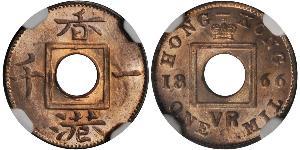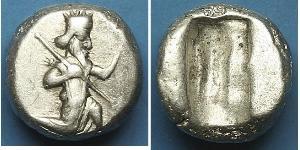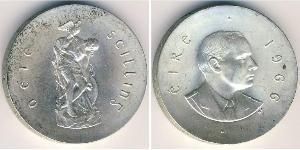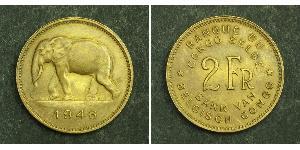(sold for $63.0)
1500s-1700s, Ceylon (Portuguese Period). Silver Larin Unit/Coin. Fish-Hook Money!
Mint Period: 1500s-1700s Reference: Mitchiner 2157-1258. Denomination: Silver Larin (fish-hook money) Unit/Coin Condition: Bent as expected for a piece, which circulated in Ceylon, old silver-test cut, minor greenish deposits, otheriwse a nice VF! Diameter: 21mm Weight: 4.81gm Material: Silver
Larin (plural: lari) is the name of a class of objects serving as coins in areas around the Arabian Sea. The name is derived from Lar, a Persian town that according to tradition would have been the first to produce lari. A larin was a piece of silver wire of about 10 centimeters long, usually folded in two equal parts and shaped like a C, though there are also lari shaped like a J, an I or an S. Lari were stamped with an Arabic or Persian text, usually the name of the local ruler.
The Larin, also known as "Koku Ridi" (Silver Hook) was in use in the Kandyan Kingdom from 17th to early part of the 19th century in Sri Lanka and were made by private parties, five of which went to a piece-of-eight, or a Spanish Dollar. These coins with a shape like a fish-hook, bear no legend, or at best poor imitations of Arabic letters; they are usually somewhat thick and short, frequently shows one or more cuts at the bend, apparently made to test the purity of the metal. During the Portuguese period larins enjoyed widespread use in Ceylon (Sri Lanka).
The silver larin coinage, which originated in the Persian Guff, was used extensively from that region around the coast of the Indian Ocean as far as Lanka during the period 16th and 17th centuries. Larins used in Lanka were bent into a "fish-hook" shape whereas those of other regions were straight. Larins actually produced in Lanka bore either imitation Persian inscriptions or meaningless designs: though specimens bearing western inscriptions are reported to have also been produced. Larins of more northerly origin that reached Lanka in the course of trade tended to be bent into "fish-hook" shape when they later subserved the currency needs of the island.
A 17th century larin would weigh about 4.75 grams. It was traditionally tariffed at 5.5 lari to the Spanish colonial piece of eight.
Lari is the root of coin denominations used in Georgia and the Maldives.
Authenticity on all offered coins guaranteed.
Portuguese Ceylon (Portuguese: Ceilão Português, Sinhala: පෘතුගීසි ලංකාව Potugisi Lankava) refers to the control of the Kingdom of Kotte by the Portuguese Empire, in present-day Sri Lanka, after the country's Crisis of the Sixteenth Century and into the Kandyan period.
Portuguese presence in the island lasted from 1505 to 1658. Their arrival was largely accidental, seeking control of commerce over territorial conquest. Their appearance coincided with the political upheaval of the Wijayaba Kollaya and were drawn into the internal politics of the island as they sought to establish control over the lucrative Cinnamon trade that originated there. The Portuguese used these internal divisions to their advantage during the Sinhalese–Portuguese War. Direct Portuguese rule inside the island did not begin until after the death of Dharmapala of Kotte, who died without an heir and who by 1580 bequeathed the Kingdom of Kotte to the Portuguese monarch. This allowed the Portuguese sufficient claim to the Kingdom of Kotte upon Dharmapala's death in 1597. Portuguese rule began with much resistance by the local population.
Eventually, the Kingdom of Kandy sought help from the Dutch Empire in their efforts to rid the island of the Portuguese. The Dutch Empire initially entered into agreement with the Kingdom of Kandy. After the collapse of the Iberian economy in 1627, the Dutch–Portuguese War saw the Dutch conquest of most of Portugal's Asian colonies. Eventually, Portugal's Ceylonese territories were ceded to the Netherlands. Nevertheless, there remain elements of Portuguese culture in Sri Lanka today from this colonial period.

|
Posted by:
anonymous 2018-04-25 |
1 Forint Austria-Hungary (1867-1918) Silver Franz Joseph I ( ...
group has 16 coins / 15 prices
⇑




















-300-150-Vw4KbzbiGiUAAAFRtHOWyoBd.jpg)







